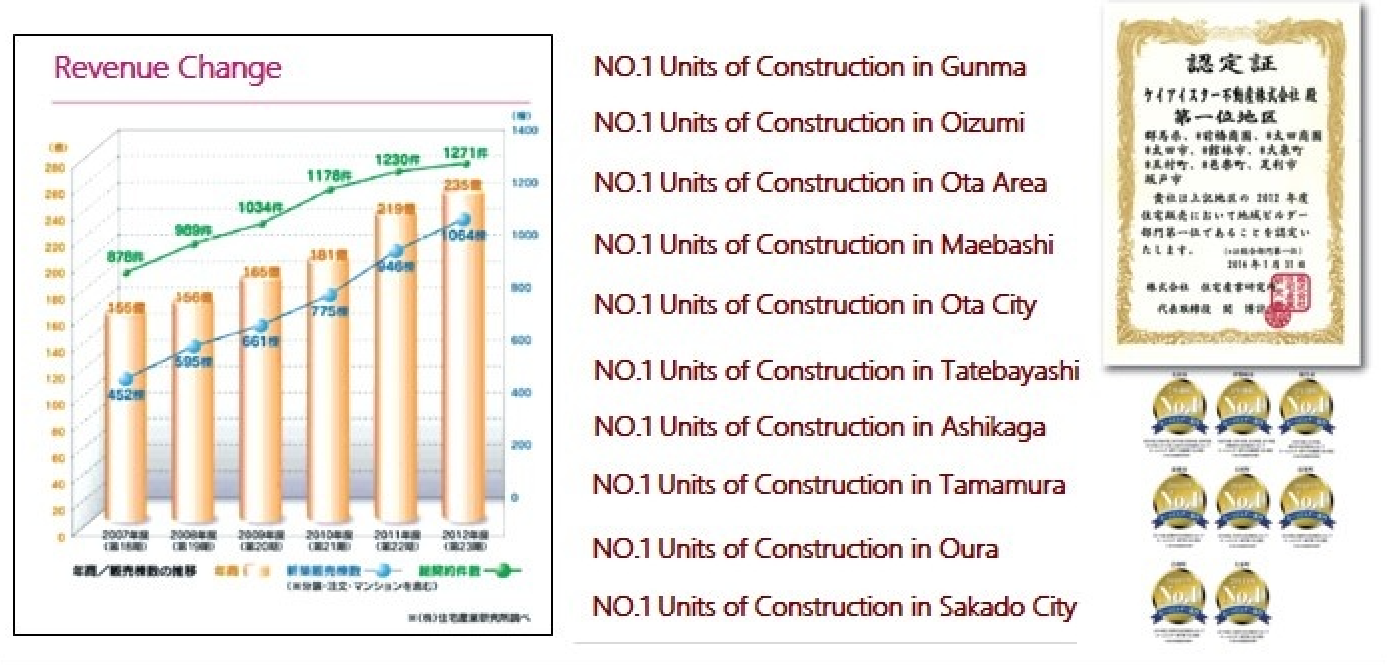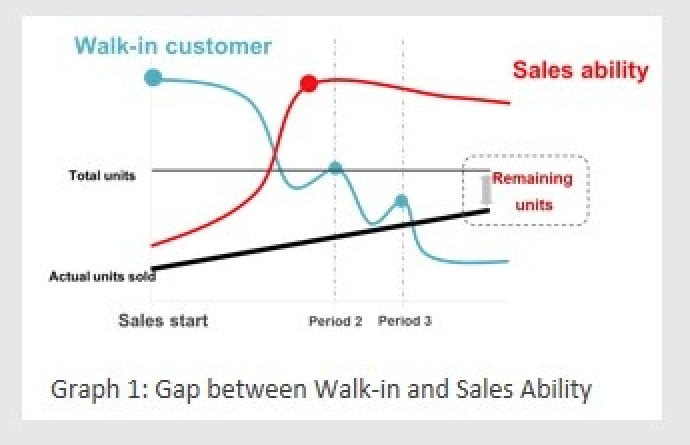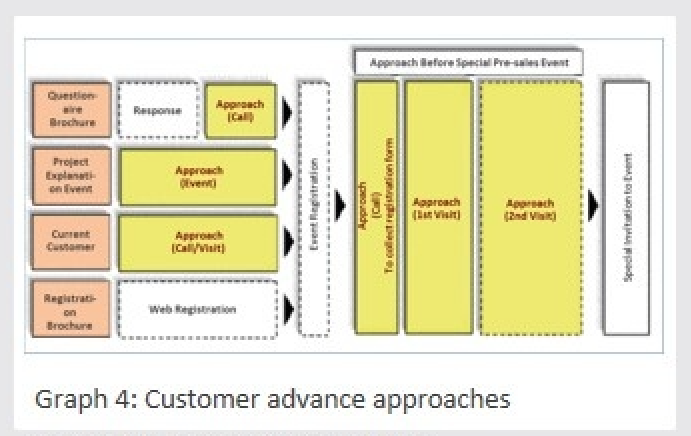Transformation from Individual to Team Sales
Establishing System for Early Sales Completion
Create a “big wave” for early sales completion.


Mr. Matsukura: Thank you. We have been supported by our customers in the areas and achieved a continuous increase in revenue. I believe this is the result of customer satisfaction with our high-quality products provided at relatively low prices. We have always established products under our company value of “Plentiful, comfortable, pleasant.”
Mr. Matsukura: Considering the market situation from now on after the consumption tax has been raised, the walk-in number will definitely drop as a result. Along with the change in the organization structure and putting more emphasis on the performance of new graduates, I think it is necessary to make a complete transformation of the sales system from now on.
Mr. Matsukura: Yes. LiB Consulting provided the solution I had been looking for. There have always been limitations in each salesperson’s contract rate. For example, it is possible to achieve a 20% contract rate through individual self-improvement. However, achieving 30% is another story and very unlikely. Therefore, when I first learned how approaching the organization as a whole can achieve a high contract rate, which could not be achieved by individual improvement from LiB Consulting, I immediately agreed with the concept.
Mr. Matsukura: Contents in the concept that impressed me was “Sales Strategic Planning to Eliminate the Causes of the Remaining Units.”

It will be easy to understand if you imagine how “remaining units” could occur in a real estate project (Graph 1). Looking at the balance between the walk-in number and sales ability, in a general case, the walk-in number is the highest when a project is newly opened then gradually drops afterwards. In contrast, sales ability starts low at the beginning and progressively improves as sales opportunities and talks with customers accumulate. Most of the time, sales ability reaches its peak when a project has been started for a period of time.
As a result, by the time salespersons have a clear image of how to successfully sell products, the project has fallen into the dilemma of having no walk-in customers to sell to anymore. Thus, this gap between the walk-in number and sales ability is the actual cause of the remaining units.
In other words, developing maximum sales ability at the beginning when the walk-in number is the highest that would prevent a project from ending with remaining units (Graph 2).

This is impossible to achieve by solely individual ability. It is necessary to fundamentally change the way of thinking from an individual ability approach to challenging by leveraging on organization power (Graph 3).
Mr. Matsukura: To succeed in this project, it is vital to maintain consistency from the marketing plan to sales and build collaboration within various divisions. Prior to the start of sales, it is necessary to plan from how a house layout should be designed, what marketing activity should be executed, and how the sales scenario should be planned considering the customer’s characteristics. Thus, all divisions from marketing, sales, and architect design must collaborate. However, as this method is new to our organization, the collaboration starts out slowly. Starting with the marketing team as a center, then a few members from the management team, and then the architect design team joins that central team. Other divisions were just observing the activities.
Mr. Matsukura: We always try to involve people by one means or another. To involve other divisions, we started sharing customer information with them and continuously shared project progress from time to time.
For example, we put value in knowing what the current sales progress and status of each customer are and in sharing good and bad examples as well (for example, contacting the customer in advance before sales starting day).
We gradually create a sense of “team sales” by sharing the progress of each customer’s interest in the project to members who do not have direct contact with the customers. Eventually, all members start to feel that “we all do this together.”

Mr. Matsukura: Even in the meeting with LiB Consulting, we earnestly discussed how to match the wave of walk-ins with sales ability.
We determined a “special pre-sales event” as the start of sales and tried to increase purchasing urge as high as possible before the actual day.

In a general sense, sales starting day is the day we meet customers for the first time. But we plan to make contact at least two times before the actual day with customers whom we have contacted once at registration.
Getting acquainted with customers, understanding customers’ characteristics and preferences, and also evaluating customers beforehand allow salespersons to be able to plan a sales scenario for each individual customer to ensure contract signing on the actual sales starting day.
We got a 50% contract rate on the sales starting day, having set the goal and plan for customers to sign contracts within that day. LiB Consulting supported us throughout the day, and their representative was even our guest speaker. Since it is the “special pre-sales event,” it is important to make customers feel special and privileged. Instead of only explaining the project, we provided customers information on how to buy a house smartly and the perfect timing to buy to create a strong reason for buying and, at the same time, create a sense that they are specially selected. As a result, customers even more earnestly considered buying our projects.
Moreover, as the event was designed to create an atmosphere involving group psychology, once there was someone signing a contract, other participants were urged to also want to do the same.
At the end of the day, we got a successful contract rate of 50%, which the existing method of individual sales style could not have achieved.
Mr. Matsukura: One of our salespersons said that it was the activity that he completed decisively the most since he joined the company. Another one mentioned that we should have done this earlier.
Thank you for your interest.
Please fill in some important information and we will be in touch.